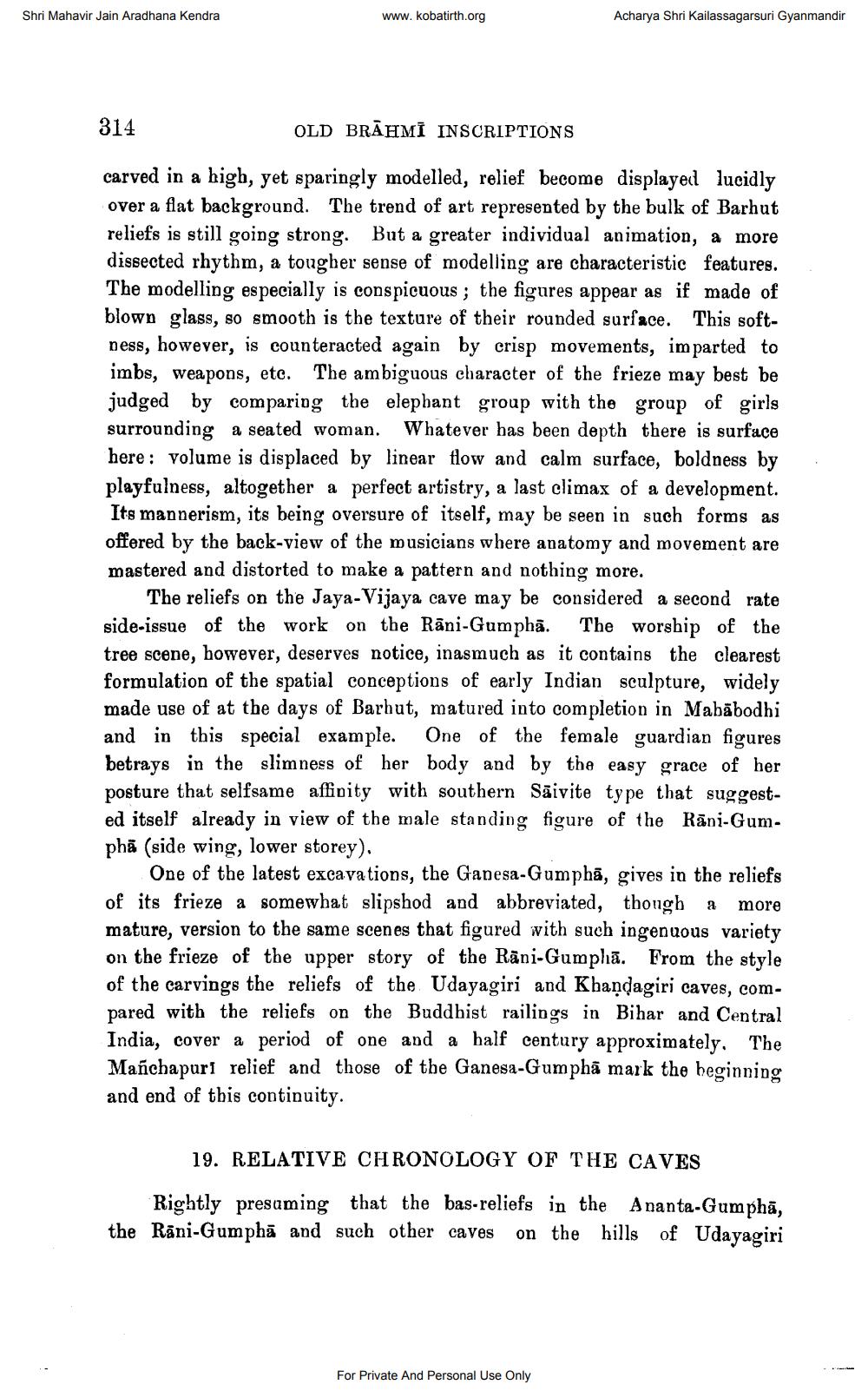________________
Shri Mahavir Jain Aradhana Kendra
www.kobatirth.org
Acharya Shri Kailassagarsuri Gyanmandir
314
OLD BRĀHMĪ INSCRIPTIONS
carved in a high, yet sparingly modelled, relief become displayed lucidly over a flat background. The trend of art represented by the bulk of Barhut reliefs is still going strong. But a greater individual animation, a more dissected rhythm, a tougher sense of modelling are characteristic features. The modelling especially is conspicuous; the figures appear as if made of blown glass, so smooth is the texture of their rounded surface. This softness, however, is counteracted again by crisp movements, imparted to imbs, weapons, etc. The ambiguous character of the frieze may best be judged by comparing the elephant group with the group of girls surrounding a seated woman. Whatever has been depth there is surface here : volume is displaced by linear flow and calm surface, boldness by playfulness, altogether a perfect artistry, a last climax of a development.
Its mannerism, its being oversure of itself, may be seen in such forms as offered by the back-view of the musicians where anatomy and movement are mastered and distorted to make a pattern and nothing more.
The reliefs on the Jaya-Vijaya cave may be considered a second rate side-issue of the work on the Rāni-Gumphā. The worship of the tree scene, however, deserves notice, inasmuch as it contains the clearest formulation of the spatial conceptions of early Indian sculpture, widely made use of at the days of Barhut, matured into completion in Mabäbodhi and in this special example. One of the female guardian figures betrays in the slimness of her body and by the easy grace of her posture that selfsame affinity with southern Sāivite type that suggested itself already in view of the male standing figure of the Rāni-Gumphā (side wing, lower storey).
One of the latest excavations, the Ganesa-Gumphā, gives in the reliefs of its frieze a somewhat slipshod and abbreviated, though a more mature, version to the same scenes that figured with such ingenuous variety on the frieze of the upper story of the Rāni-Gumphā. From the style of the carvings the reliefs of the Udayagiri and Khaņdagiri caves, compared with the reliefs on the Buddhist railings in Bihar and Central India, cover a period of one and a half century approximately. The Mañchapuri relief and those of the Ganesa-Gumphā mark the beginning and end of this continuity.
19. RELATIVE CHRONOLOGY OF THE CAVES Rightly presuming that the bas-reliefs in the Ananta-Gumphā, the Rāni-Gumphā and such other caves on the hills of Udayagiri
For Private And Personal Use Only




